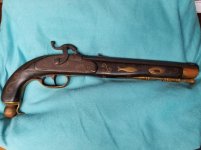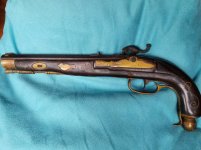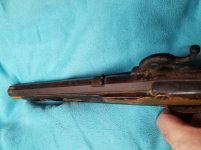Hi,
I recently purchased this pistol at an auction (hey, I thought it looked neat) but I'm having a hard time figuring out what it is.
I did find a Belgium proof mark on the barrel (oval with a crown that has ELG with a star under it) and the barrel says "Made In Belgium".
Other than that I can't find anything on it.
Any help figuring out what this is?
I recently purchased this pistol at an auction (hey, I thought it looked neat) but I'm having a hard time figuring out what it is.
I did find a Belgium proof mark on the barrel (oval with a crown that has ELG with a star under it) and the barrel says "Made In Belgium".
Other than that I can't find anything on it.
Any help figuring out what this is?



